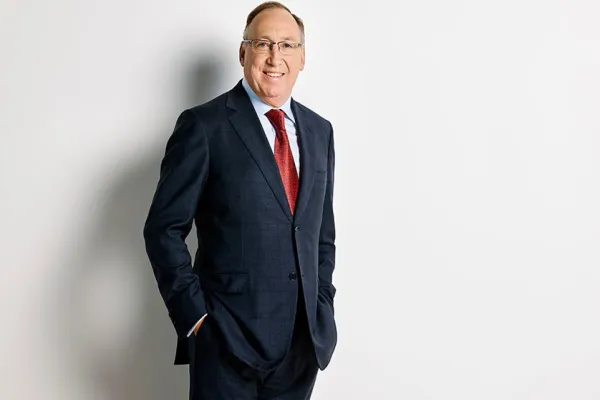Gary Smith is one of the few proud survivors of what he calls the telecommunications nuclear winter. Promoted from president to CEO of Ciena Corp. in May 2001, Smith settled into his chair as the air was fast rushing out of the telecom bubble. With customers such as Sprint and Qwest Communications hurting, the Linthicum, Maryland, provider of network equipment saw its sales plummet from $1.6 billion in 2001 to just $290 million in 2002. Rather than hunker down and wait for the market to recover, Smith decided to completely restructure the company and invest heavily to position it for the future. At a time when investors were clamoring for short-term fixes, Smith boosted Ciena’s annual research and development budget almost higher than its revenues. He moved from making all products in-house to outsourcing most manufacturing. And he acquired several start-up equipment makers to broaden Ciena’s product line.
Smith got plenty of criticism along the way, but his long-term strategy is finally bearing fruit. In the third quarter of 2006, Ciena regained profitability after years of losses, and in December it reported that earnings for the quarter ended October 31 more than doubled, to $30.4 million. The 47-year-old British native is now focused on exploiting what he believes will be a long transition in the telecommunications industry from voice-oriented networks to those that can handle ever-increasing flows of video and other data. He recently discussed his tenure, and the future, with Institutional Investor Assistant Managing Editor Justin Schack.
Institutional Investor: What was it like to become CEO as your industry was tanking?
Smith: The advice of some of my old bosses — never take over anything that’s going well — comes to mind. The whole market imploded, and we went through a nuclear winter in telecom. I guess what doesn’t kill you makes you stronger, right?
How did you figure out what you needed to do to turn the company around?
Given the immenseness of the decline, you go through a little bit of shock. The first thing we needed to do was understand where we really were as a business and what was going on in the marketplace. It took us a few months to do that before we could develop and execute a plan. One option was to purely hunker down, cut expenses to the absolute minimum and just hope the market comes back. Instead, we took a contrarian stance. We bet on where the market was going to come back and what it would look like. We had a different set of issues than a lot of our competitors did in that we were really a single-technology, shooting-star kind of company that had not really matured into a broad-based business. So we also had to deeply and fundamentally restructure the business. We got out of manufacturing. We completely changed our supply chain and how we serviced our customers. We went down from 5,000 people to about 1,500 people in two-and-a-half to three years. And at the same time, we acquired four companies.
Why were you so aggressive instead of hunkering down?
Hunkering down was, in terms of value creation, more risky than at least placing a bet. The odds were that the market wasn’t going to come back in the same way, and what competitive advantage are you going to have at that point? You eke out a miserable existence.
Plenty of people thought you were crazy. Did you ever doubt that it would work?
It’s hard. You need to have the strength of your convictions, and you need to be able to modify things as you go. No strategy should be in stone. We certainly modified around the edges and tacked around some of the challenges that we saw. Because we were effecting this investment strategy at the same time we were transforming the company, there were times that it looked, certainly from the outside and absolutely from the inside, like there were just too many moving parts.
What lessons do you draw from that period?
During tough times there’s a tendency to be more centrally controlled, certainly on the financial side and with respect to important decision making. In hindsight we probably did that longer than we should have. When there were clear signs that our strategy was coming together, which was probably mid-2004 coming into 2005, it took us longer than we thought to delegate some of that authority back out. And in talking with other people who’ve gone through that, I’ve discovered that it’s not a new phenomenon.
You asked to have your salary reduced at one point during the turnaround. Why?
When you’re asking people around you to work hard and you’re not paying bonuses, etc., I think you have to set an example. My salary was determined at a time when Ciena was a $1 billion–plus company, and it clearly became much smaller than that, so I felt it was inappropriate to draw that kind of base salary.
How did it feel to finally post a profit in 2006?
I was relieved. But I don’t think we got everything right during that phase. I would have done some things differently, some things faster, but hindsight’s a wonderful thing. The industry is so competitive and it moves so quickly that you really don’t get a lot of time to rest on your laurels. There are still challenges, but arguably a better set of challenges, around growth instead of survival. The underlying takeaway is that you’ve got to play for the medium to long term. In technology it takes time to invest in products and architectures. It takes two to three years for products to come to market. You’ve got to be patient enough but be willing to tack and change and modify, so you give the strategy time to take effect. Sometimes from a shareholder point of view, clearly there’s a disconnect in terms of the patience and timing.
So how do you deal with shareholders who demand bigger change in the short term? Is it just impossible to get through to that segment of your owners?
Basically, yes. You can’t sugarcoat that. If we’d have listened in purest terms to what we were being told by some of the folks in the investment community, we wouldn’t be here. Clearly, we’re not stupid; we understand that spending almost more in R&D than you’re getting in revenue is not a sustainable business model. But had we just managed by the short-term numbers, we would never have been able to make the investments that have positioned us well for the future.
What are some of the things you would have done differently or faster?
I think while we were trying to read what was going on in the marketplace, we probably should have done some cuts a bit earlier. That was complicated by the fact that we needed to finish development on some products so we could get them out to market as part of the strategy. But I know a number of other executives who have gone through these kinds of challenges, and one of the things they consistently say is, “I would have done it harder and earlier.”
Lately, you’ve been criticized for forecasting too conservatively. Is that a reflection of your experience during the bubble?
We’re all a product of our history, right? I think it’s more a function of trying to manage for the long term. We try and call it how we see it. But if I can’t see it, then I don’t want to speculate. We’ve got good visibility for the first couple of quarters of 2008, but we need more time to see what’s going to go on for the full year. We do feel good about the overall industry dynamics. Demand for capacity is being fueled by applications like high-definition television and video and Internet to mobile devices. Most of the networks in the world were built for voice and now have to migrate to carry data and video. We’re really in the sweet spot of helping carriers make that transition, and I think we’re in the early innings of that baseball game.
What will we see in the late innings?
Video everywhere. You’ll see video and be able to access the Internet with great efficiency on your handheld device. HDTV will be everywhere. Once you’ve seen it, you don’t want to give it up, and you want it everywhere. As a sports fan, I know about that personally.
Ciena is still small relative to giant equipment makers like Alcatel-Lucent. Can it remain independent for the long haul?
If you go back two or three years, there was this view that you had to have critical mass globally to be significant in this space. That triggered a lot of M&A activity among the big players. You’ve essentially got four or five large global competitors now. I never subscribed to that as an absolute. If you look at the industry, it’s pretty fragmented. You’ve got a lot of new technologies, diverse geographies and tremendously diverse applications: peer-to-peer, wireless, terrestrial, bandwidth on demand — a multitude of ways to carry network traffic. There’s plenty of room for Ciena — provided we continue to execute — to be a substantial specialist player helping carriers make the transition from voice networks to true data, IP and Ethernet.





